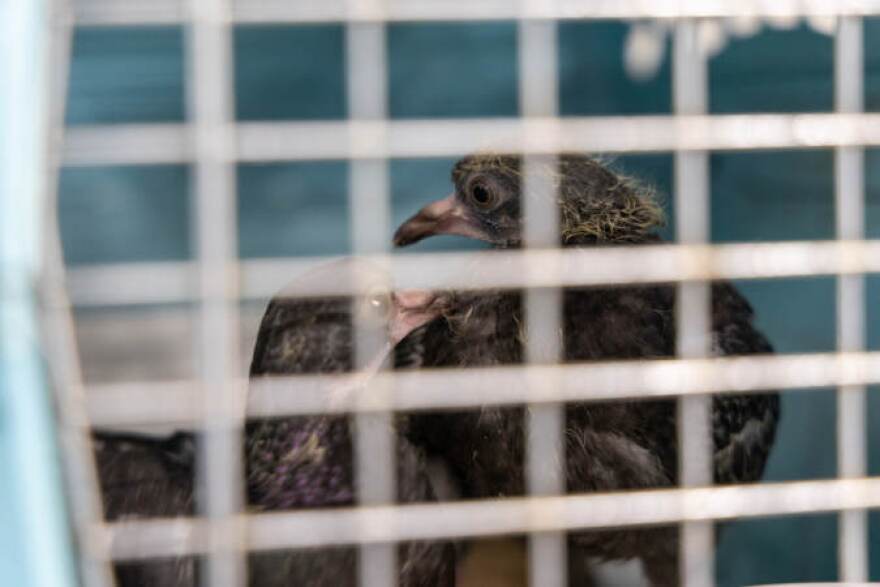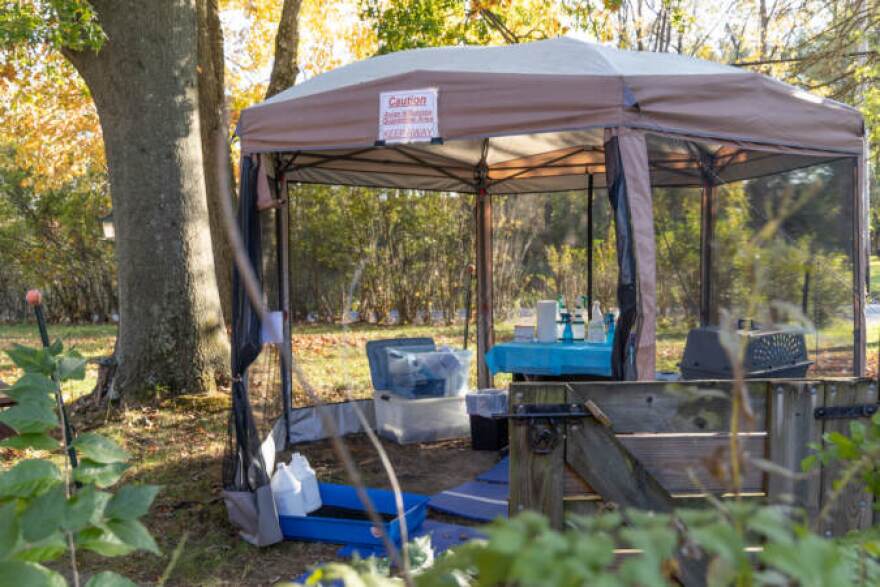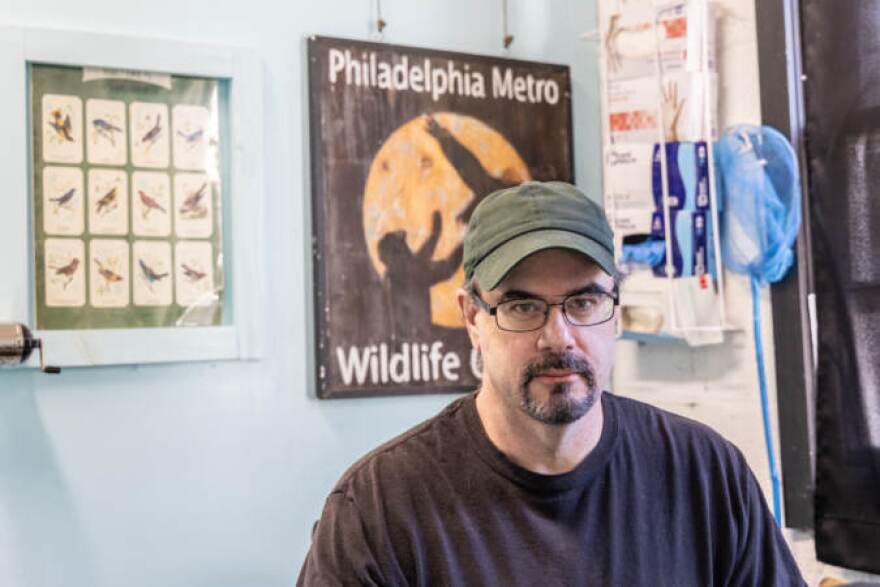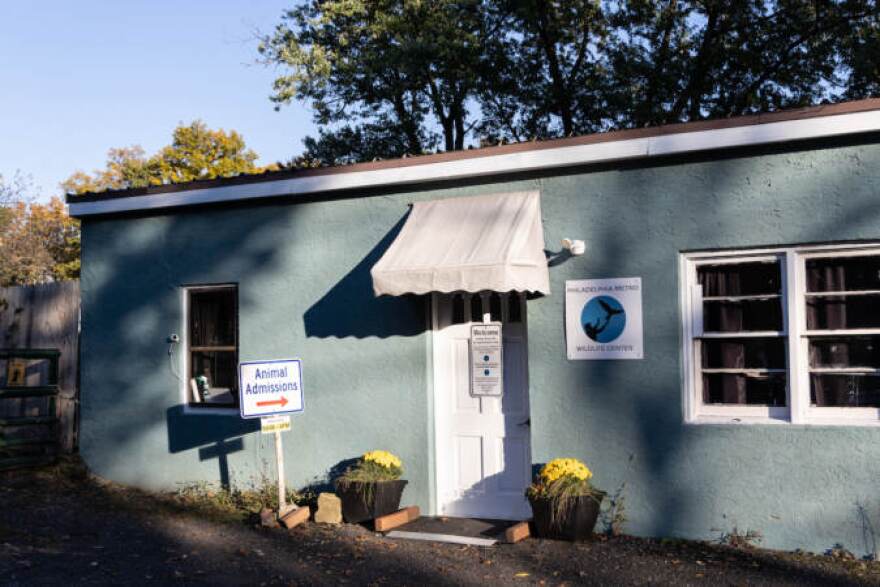Ahead of Thanksgiving, Pennsylvania farmers are preparing for thousands of fresh turkeys to be picked up for the holiday meal.
Some farmers are breathing a small sigh of relief to have gotten to this point, given that a deadly strain of avian influenza has wiped out hundreds of flocks across the country this year.
The virus spreads easily from wild birds to farm animals, so avoiding it can feel a bit like the luck of the draw.
“We’re trying to keep our birds healthy and clean and fresh, and feed them good stuff,” said Axel Linde, owner of Lindenhof Farm in Kirkwood, Lancaster County. “So far, fingers crossed everything’s going well.”
The U.S. outbreak of highly pathogenic avian influenza, which began in February, has so far affected more than 50.39 million birds nationally, including 4.4 million in Pennsylvania. Most of them were farm or commercial poultry birds.
As a result,the prices of eggs remain elevated. Poultry products like whole turkeysmay cost more and be harder to find at stores. Wildlife rehabilitation centers and farms have implemented additional biosecurity measures, at a cost. And animal diagnostic laboratories have had to ramp up testing efforts to process hundreds of samples a day.
But what’s still concerning, experts say, is that they don’t yet know when this outbreak will end — new cases continue to crop up, including locally in Allegheny, Dauphin, and Lehigh counties this month.

“Traditionally, these outbreaks kind of tend to fizzle out when the density of birds is not as great as it is during migration, when birds are collecting in the same location and their numbers are very, very high and disease transmission rates are high,” said Andrew Di Salvo, of the Pennsylvania Game Commission.
“We were hoping that this year and with this outbreak, the same would hold true — that as late summer approached, we’d see the disease and the outbreak fizzle out,” he said. “And that hasn’t quite exactly happened.”
Waterfowl species like ducks and geese are common carriers of the virus. Similar to how influenza spreads among humans, avian influenza is passed on through an infected bird’s saliva, nasal fluids, or feces.
The virus doesn’t typically pose a threat to humans, but it can be deadly for birds.
Dr. Lisa Murphy is a veterinarian and co-director of the Wildlife Futures Program at the University of Pennsylvania School of Veterinary Medicine. She said farmers or bird caretakers may notice signs of an outbreak, like unexpected deaths, unexplained respiratory illness in large numbers of birds. That’ll trigger the need for a test.
If positive for highly pathogenic avian influenza, all birds in the flock, on the farm, or in the same enclosure are killed, as required by the U.S. Department of Agriculture.
Murphy is also the resident director of New Bolton Center Diagnostic Laboratories, which is part of the Pennsylvania Animal Diagnostic Laboratory System, a network of three labs that do testing for veterinarians, farmers, animal owners, agriculture businesses, and regulatory agencies.
The first case of highly pathogenic avian influenza in Pennsylvania was identified in Aprilin Lancaster County. Since then, Murphy said the state has significantly ramped up testing efforts, with the New Bolton Center doing same-day results for more than 100 samples a day at times.

Keeping up with the demand for specialized testing was difficult because technicians need to be nationally certified, Murphy said. Animal laboratories have also experienced some of the same testing supply-chain issues as human laboratories have during the COVID-19 pandemic.
Testing has been a crucial component of biosecurity measures for places like the Red Creek Wildlife Center in Schuylkill Haven, which stopped taking in waterfowl birds earlier this year.
Founder Peggy Hentz said between testing measures, buying personal protective equipment, opening an adjacent property to protect healthy birds, and canceling most outdoor educational programming, this outbreak has cost the center about $30,000.
“It’s really hit us hard, but we’re going to keep all of our measures in place, cause we’re not taking a chance,” Hentz said.
At the Philadelphia Metro Wildlife Center in Montgomery County, executive director Rick Schubert said birds are tested before they’re even allowed onto the grounds.
“That’s the cutoff point,” he said. “Because I would not take an animal and put it in a cage and say, ‘Let’s quarantine it and see if it develops symptoms’, because by then it’s too late. [The virus] is now in and around every other bird.”

For farmers of commercial flocks, one infected bird means euthanizing all others. Mike Badger, executive director of the American Pastured Poultry Producers Association, said that can be particularly devastating for a business.
“You’ve just taken out all of the revenue stream of that farm as related to poultry,” he said. “You then lose future income. You’re without poultry for an undetermined amount of time.”
Despite 34 flocks in Pennsylvania getting hit during the current outbreak, state Secretary of Agriculture Russell Redding said the state’s agriculture industry as a whole has not been detrimentally impacted.

The state created funding programs to help affected farms and businesses recover from outbreaks like this one.
“This is a $7.1 billion industry in Pennsylvania, [which] employs 26,000 people,” Redding said. “We wanted to take extra measures to make sure that the producers were in a good position to bridge from being positive or implicated, of having implicated flock, and getting them back in business.”
The last significant outbreak of avian influenza was in 2015. It was classified as the worst animal disease outbreak in the U.S., resulting in the deaths of 50.4 million birds in 15 states. Flocks in Pennsylvania were not affected in that outbreak.
Murphy said it’s “highly likely” that this year’s outbreak will soon eclipse those numbers.
“This thing isn’t over yet,” she said. “It’s not finished here in Pennsylvania, it’s not finished at a national level.”
Read more from our partners, WHYY.

